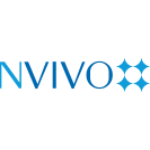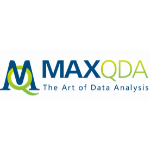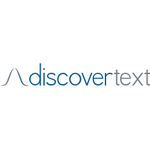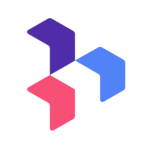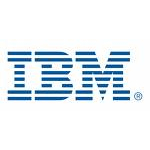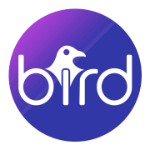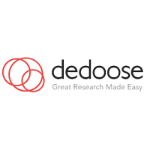TechnologyCounter provides genuine, unbiased real user reviews to help buyers make informed decisions. We may earn a referral fee when you purchase through our links, at no extra cost to you.
List of 15 Best Qualitative Data Analysis Software
Showing 1 - 15 of 17 productsATLAS.ti is an innovative software that empowers researchers, students, and professionals to organize, analyze and visualize their qualitative data in a seamless is a manner. Through its robust features interface, ATLAS.ti streamlines the research pr...Read ATLAS.ti Reviews
NVivo is a software designed to help you organize, analyze, and gain insights from your data. Say goodbye to endless spreadsheets and hello to a more efficient and effective research process. With NVivo, you can take your qualitative and mixed method...Read NVivo Reviews
QDA Miner Lite, a user-friendly qualitative data analysis tool designed for researchers and analysts of all levels. With its powerful features interface, this software allows users to efficiently organize, analyze, and visualize large amounts of rich...Read QDA Miner Lite Reviews
MAXQDA is a qualitative data analysis software that helps researchers and individuals easily manage and analyze large amounts of data in various formats. With its user-friendly interface features, MAXQDA allows for efficient and effective data coding...Read MAXQDA Reviews
Quirkos is a qualitative research software designed to help you efficiently analyze and make sense of your data. With its user-friendly interface and flexible coding tools, Quirkos empowers researchers to delve deep into their data and uncover unique...Read Quirkos Reviews
DiscoverText is a tool for managing, analyzing, and visualizing text data. With its impressive array of features interface, DiscoverText is the ideal solution for any individual or organization seeking to make sense of large volumes of text. From soc...Read DiscoverText Reviews
Transana, the innovative software designed for qualitative researchers and analysts. With advanced features and a user-friendly interface, Transana allows for in-depth analysis of audio, video, and text data. Increase efficiency, accuracy, and organi...Read Transana Reviews
Dovetail is a software solution for seamless is a team collaboration. Designed to streamline your workflow and maximize productivity, Dovetail offers a user-friendly platform for project management and communication. Say goodbye to scattered emails a...Read Dovetail Reviews
LiveSession is a and user-friendly software designed to help businesses analyze and improve their websites performance. With its innovative features interface, LiveSession offers valuable insights into user behavior, allowing companies to optimize th...Read LiveSession Reviews
Qiqqa, a revolutionary research and reference management tool designed to fuel productivity, organization, and collaboration. With features such as smart document management, powerful search capabilities, annotation tools, Qiqqa simplifies the resear...Read Qiqqa Reviews
IBM SPSS Modeler is a data mining and analysis software that enables businesses and organizations to make informed decisions based on data-driven insights. With intuitive features algorithms, this software allows users to explore, visualize, and pred...Read IBM SPSS Modeler Reviews
ITLytics, the ultimate tool for driving data-driven decisions and transforming your business. With its powerful analytics interface, ITLytics provides valuable insights to help you stay ahead of the competition and make informed decisions. Say goodby...Read ITLytics Reviews
BIRD Analytics is a data analysis tool that takes your business intelligence to new heights. With BIRD Analytics, you can effortlessly access, analyze, and visualize your data in real-time, empowering you to make informed decisions and drive your org...Read BIRD Analytics Reviews
Dedoose is a and user-friendly data analysis software designed to streamline and enhance your research process. With its intuitive interface features, Dedoose enables you to efficiently organize, explore, and interpret your data, providing valuable i...Read Dedoose Reviews
Looking for an innovative is a analysis tool? Look no further than f4analyse! This powerful software offers in-depth data analysis and visualization, as well as customizable features to streamline your workflow. With f4analyse, analyzing data has nev...Read f4analyse Reviews
- What Is Qualitative Data Analysis Software?
- Top Reasons Why Businesses Need Qualitative Data Analysis Software?
- What Are the Top Key Features of Qualitative Data Analysis Software?
- What Are the Top Benefits of Qualitative Data Analysis Software?
- What Are the Steps to Choose the Right Qualitative Data Analysis Software?
- What Are the Types of Qualitative Data Analysis Software for Different Industries?
- What Are the Technology Trends for Best Qualitative Data Analysis Software?
- What Are the Deployment Options for Qualitative Data Analysis Software?
What Is Qualitative Data Analysis Software?
Computer software that analyses qualitative data is known as qualitative data analysis software. Nonnumerical information, such as comments, observations, or interviews, is frequently included in qualitative data. The software provides capabilities for data analysis such as coding and thematic analysis.
The software will allow the user to find meaningful phrases or words in the data and tag or organize them into categories for coding. Instead of painstakingly sorting through reams of unorganized data, this makes it easier for a researcher to analyze the data. Another option provided by qualitative analysis software is thematic analysis.
Using this method, the researcher can seek patterns in the data to help find themes and real-world events. This can aid the researcher in developing hypotheses to be tested later in the research process.
In addition to coding and thematic analysis, the best qualitative data analysis software may include additional features such as the ability to view data in tables or charts, searchable databases of the data, or even record-keeping capabilities that allow the researcher to track trends or changes in data over time.
In conclusion, top qualitative data analysis software can assist researchers in swiftly and simply analyzing nonnumerical data by providing tools such as coding and thematic analysis. It may also include capabilities such as searchable databases, table displays, and record-keeping.
Top Reasons Why Businesses Need Qualitative Data Analysis Software?
1. Qualitative data analysis software enables firms to uncover patterns and connections to make better decisions.
2. It decreases the amount of human data extraction and interpretation necessary.
3. It assists organisations in comprehending customer comments and opinions.
4. The best qualitative data analysis software aids in the discovery of long-term trends and variations in customer behaviour.
5. It allows businesses to track client behaviour across many touchpoints.
6. Qualitative data analysis tools can assist in the identification of important determinants of client loyalty.
7. It can reveal user behaviour that standard data analysis cannot.
8. It allows for a more in-depth insight into the customer experience.
9. It aids in the identification of potential for product and service enhancements.
10. It offers actionable data that may be utilised to develop measurements and benchmarks.
11. It assists businesses in increasing their marketing ROI.
12. It provides information to assist in anticipating client demands and desires.
13. It provides enterprises with a competitive advantage.
14. It aids in the identification of customer and market potential.
15. It can assist in determining client satisfaction and loyalty levels.
What Are the Top Key Features of Qualitative Data Analysis Software?
1. Text type analysis: Researchers can use the best qualitative data analysis software to locate, categorize, and analyze text-based data such as interviews and surveys.
2. Visualization tools: Data visualization tools enable academics to see the 'big picture' of their data and discover links between concepts and ideas.
3. Coding and theme detection: Qualitative data analysis software assists researchers in organizing and improving analysis by assigning codes, themes, and labels to specific words and phrases in text-based data.
4. Data organization: Software can assist researchers in organizing, segmenting, and categorizing data.
5. Metaphor detection: Qualitative data analysis tools can recognize metaphors, allowing for more sophisticated data analysis.
6. Coding and categorization: Text-based data can be swiftly classified using software for faster analysis.
7. Statistical tests: On qualitative data, the software can run any standard statistical test, such as chi-square and t-tests.
8. Manual entry: Researchers have the option of manually entering and modifying data.
9. Flexible reports: The generation of narrative and tabular reports is possible with qualitative analysis software.
10. Cloud-based services: Teams can collaborate and work on data in a shared cloud repository using cloud-based tools.
What Are the Top Benefits of Qualitative Data Analysis Software?
The top benefits of qualitative data analysis software are:
1. Increased Efficiency: The top qualitative analysis software allows researchers to spend less time working on manual coding and more time analyzing data.
2. Improved Accuracy: Qualitative analysis software provides automatic coding options and can rapidly and precisely analyze details and records, lowering the danger of losing critical data.
3. Better Visibility: A thorough picture of the data being analyzed is provided by qualitative analysis software, making it easier to spot patterns and trends in the data.
4. Enhanced Collaboration: Researchers can use qualitative analysis tools to swiftly exchange data and insights with collaborators in different places, allowing them to collaborate in real-time.
5. Cost Savings: The use of the best qualitative analysis software eliminates the need for manual coding and minimizes the time and cost of data analysis, allowing researchers to save money over time.
What Are the Steps to Choose the Right Qualitative Data Analysis Software?
The steps to choose the right qualitative data analysis software are as follows:
1. Define your research question(s) and the type of qualitative analysis required to answer them.
2. Determine the feature set required to complete the analysis. Consider the features required for data coding, analysis, and interpretation.
3. Compare the features of several software packages based on your study requirements, data scope, and budget.
4. Check that the software is compatible with various data sources, such as PDF documents, audio files, text documents, and so on.
5. Examine the software provider's customer support, such as trial periods, online tutorials, user manuals, and other related help.
6. Read internet reviews and check the programme provider's references.
7. Pilot test the programme to ensure that the tools and procedures are effective.
8. When choosing software, consider the ease of use, customization choices, and data sharing support.
9. Cost, flexibility, scalability, integration with other applications, and compliance with data collecting sources and procedures are all important considerations.
10. Finally, choose software that best suits your research goals while also being simple to use and cost-effective.
What Are the Types of Qualitative Data Analysis Software for Different Industries?
There are various forms of qualitative data analysis tools available for various businesses, including text analysis, discourse analysis, and audio/visual analysis.
Users can analyse textual data from site logs, documents, surveys, emails, and other sources using text analysis applications such as Leximancer, NVivo, and Atlas.ti. MAXQDA and Transana discourse analysis software can be used to aid in the analysis of spoken or written language.
FaceReader, Pexel, and Subtitler are examples of audio/visual analysis tools that can be used to identify and analyse facial expressions, emotions, and pauses in conversations. Furthermore, industry-specific analytic software such as Qualtrics for customer experience management, NodeXL for data visualisation, and SPSS for quantitative analysis are available.
What Are the Technology Trends for Best Qualitative Data Analysis Software?
1. Automation: Many data analysis jobs may be sped up and simplified using automation. Automation enables faster analysis, repetition of data, and increased precision. Leading qualitative data analysis software, for example, may include automated coding, which allows users to swiftly build categories from unstructured material.
2. Natural Language Processing: Another key technological innovation in the best qualitative data analysis software is natural language processing. It allows users to analyze audio, text, and video transcripts more quickly by dividing them down into distinct concepts. This technology can recognize topics, themes, and patterns in data automatically.
3. Visualizations: In top qualitative data analysis software, visual analytics is an important trend. It enables researchers to quickly generate insights from complex data sets in a visually appealing manner. Data reports may be rapidly and simply transformed into visualizations, providing innovative and engaging ways to study data.
4. Cloud-Based Solutions: The cloud has transformed qualitative data analysis by making data available from any location. Many QDA software packages have cloud-based components that allow access from various devices, as well as robust collaborative tools.
5. Artificial Intelligence: Another developing technology trend in qualitative analysis software is artificial intelligence. AI provides strong methods for processing and visualizing data, as well as identifying patterns in data more quickly. AI-powered software can deliver more relevant insights more quickly, resulting in more accurate analysis.
What Are the Deployment Options for Qualitative Data Analysis Software?
Local installation or cloud-based solutions are the most common deployment methods for qualitative data analysis software.
1. A local installation involves downloading software to a single computer and storing any data on the machine's hard disc. This is advantageous for those who require more control over their data but may require additional storage space or password protection.
2. Cloud-based solutions enable access to software without the requirement for software to be downloaded and installed on a local workstation, and in certain circumstances, give extra collaboration features for team members to exchange data and perspectives.
In addition, cloud-based systems are frequently connected with other web-based data storage solutions, such as Google Drive or Dropbox, allowing simple sharing and collaboration.

